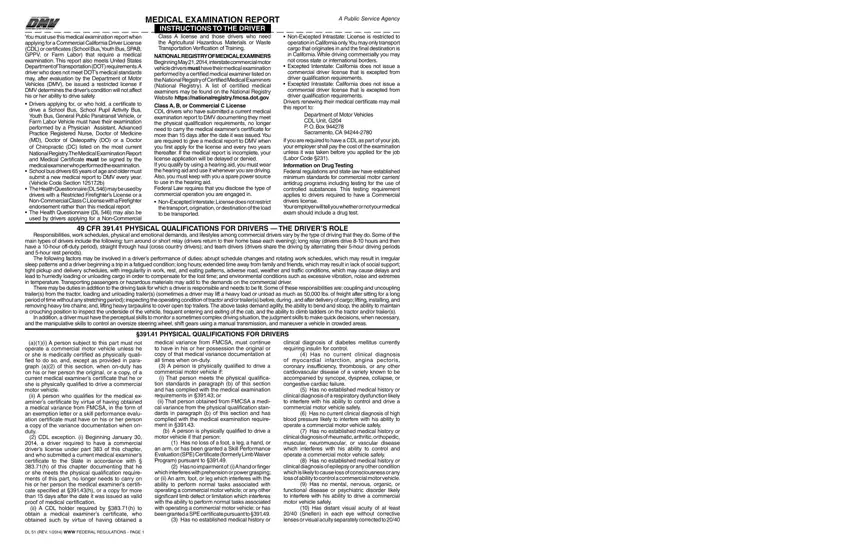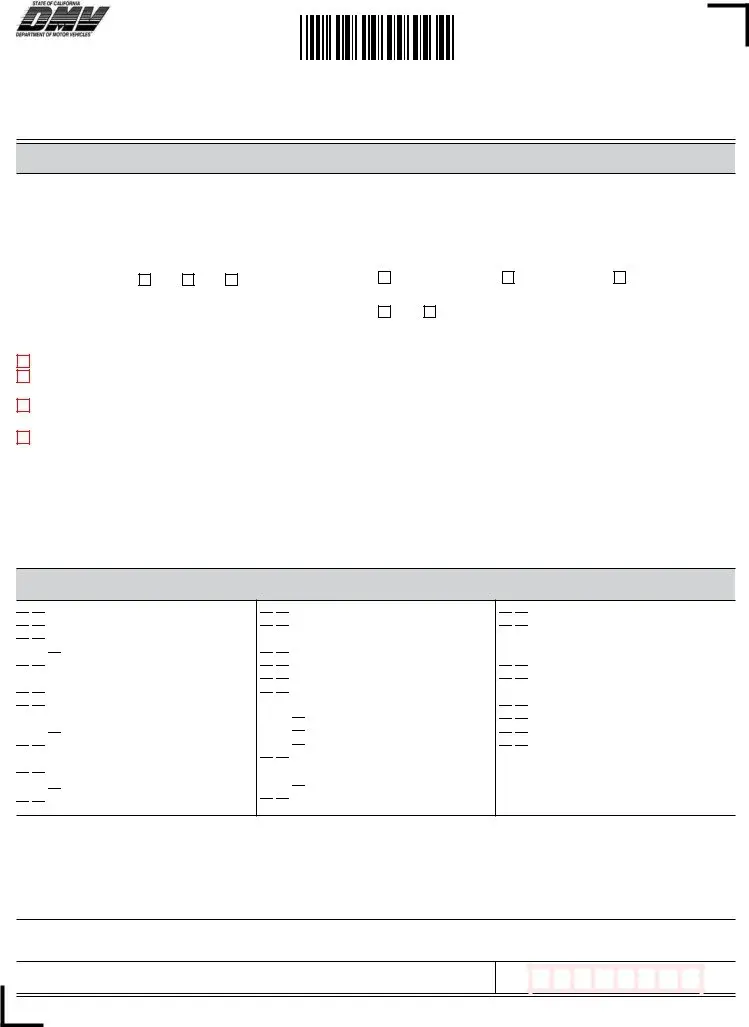The PDF editor will make creating files easy. It is really straightforward to change the [FORMNAME] document. Keep up with the following steps in an attempt to do it:
Step 1: Click the button "Get Form Here".
Step 2: You'll notice all the options you can undertake on the document after you've entered the dl 51 dmv form editing page.
Enter the necessary information in each segment to fill in the PDF dl 51 dmv form

Type in the data in the yes no, yes no, yes no, Any illness or injury in last, medication Eye disorders or, medication, Heart surgery valve replacement, medication, Muscular disease, Shortness of breath Lung disease, diet pills insulin, Nervous or psychiatric disorders, medication, Loss of or altered consciousness, and Fainting dizziness Sleep disorders area.

Jot down the necessary details when you find yourself on the DRIVER LICENSE NUMBER, NAME, DATE OF EXAM, MeDiCal eXaMineR CoMPletes, QualiFieD, not QualiFieD, Check each item in appropriate box, vision numerical readings must be, standard at least acuity snellen, numerical readings must be provided, aCuity unCoRReCteD CoRReCteD, Right Eye, Left Eye, Right Eye, and Left Eye segment.

You need to specify the rights and obligations of the sides in the TELEPHONE NO, LICENSE NOSTATE OF ISSUE, SIGNATURE X, heaRinG numerical readings must, standard a Must irst perceive, Check if hearing aid used for tests, Check if hearing aid required to, INSTRUCTIONS To convert, numerical readings must be recorded, RiGht eaR, leFt eaR, RiGht eaR, leFt eaR, hz hz hz hz hz hz, and a Record distance from individual section.

Finish the template by looking at all these sections: year if or less Onetime, RECORD PULSE RATE, or higher, Stage, NA Driver not qualified, laBoRatoRy anD otheR test, urinalysis is required Protein, OTHER TESTING DESCRIBE AND RECORD, SP GR, PROTEIN, BLOOD, SUGAR, uRine sPeCiMen, Page of, and DL REV WWW.

Step 3: Choose the Done button to ensure that your finished file can be exported to any type of gadget you select or mailed to an email you specify.
Step 4: Generate duplicates of the document - it can help you stay away from potential future troubles. And fear not - we cannot share or see your data.







 Any illness or injury in last 5 years
Any illness or injury in last 5 years


 Head/Brain injuries, disorders or illnesses
Head/Brain injuries, disorders or illnesses


 Seizures, epilepsy
Seizures, epilepsy
 medication ____________________
medication ____________________


 Eye disorders or impaired vision (except corrective lenses)
Eye disorders or impaired vision (except corrective lenses)


 Ear disorders, loss of hearing or balance
Ear disorders, loss of hearing or balance


 Heart disease or heart attack, other cardiovascular condition
Heart disease or heart attack, other cardiovascular condition
 medication ____________________
medication ____________________

 Heart surgery (valve replacement/ bypass, angioplasty, pacemaker)
Heart surgery (valve replacement/ bypass, angioplasty, pacemaker) 

 High blood pressure
High blood pressure
 medication ____________________
medication ____________________


 Muscular disease
Muscular disease


 Shortness of breath
Shortness of breath


 Lung disease, emphysema, asthma, chronic bronchitis
Lung disease, emphysema, asthma, chronic bronchitis


 Kidney disease, dialysis
Kidney disease, dialysis


 Liver disease
Liver disease


 Digestive problems
Digestive problems


 Diabetes or elevated blood sugar controlled by:
Diabetes or elevated blood sugar controlled by:
 diet
diet
 pills
pills
 insulin
insulin


 Nervous or psychiatric disorders, e.g., severe depression
Nervous or psychiatric disorders, e.g., severe depression
 medication ____________________
medication ____________________


 Loss of, or altered consciousness
Loss of, or altered consciousness


 Fainting, dizziness
Fainting, dizziness


 Sleep disorders, pauses in breathing while asleep, daytime sleepiness, loud snoring
Sleep disorders, pauses in breathing while asleep, daytime sleepiness, loud snoring


 Stroke or paralysis
Stroke or paralysis


 Missing or impaired hand, arm, foot, leg, inger, toe
Missing or impaired hand, arm, foot, leg, inger, toe


 Spinal injury or disease
Spinal injury or disease


 Chronic low back pain
Chronic low back pain

 Regular, frequent alcohol use
Regular, frequent alcohol use 

 Narcotic or habit forming drug use
Narcotic or habit forming drug use


